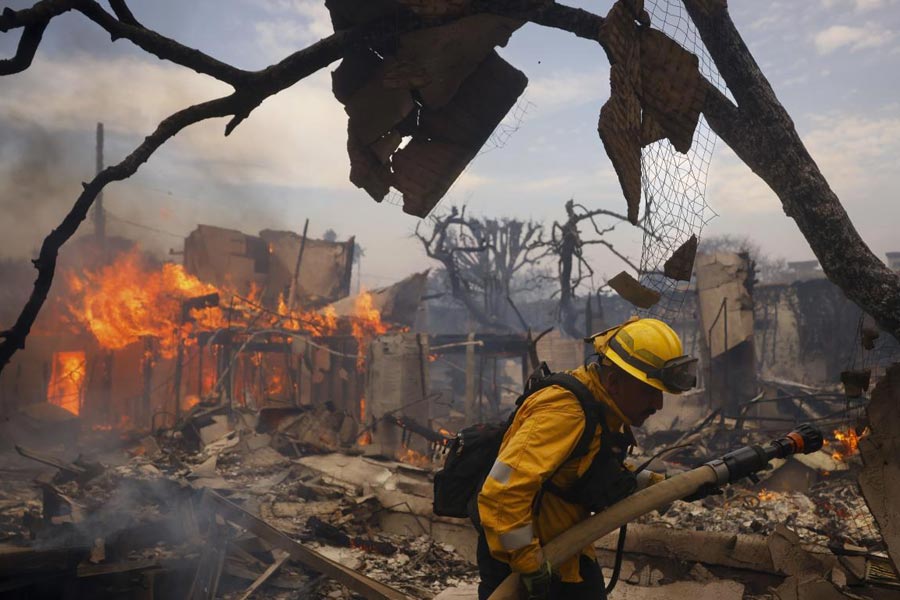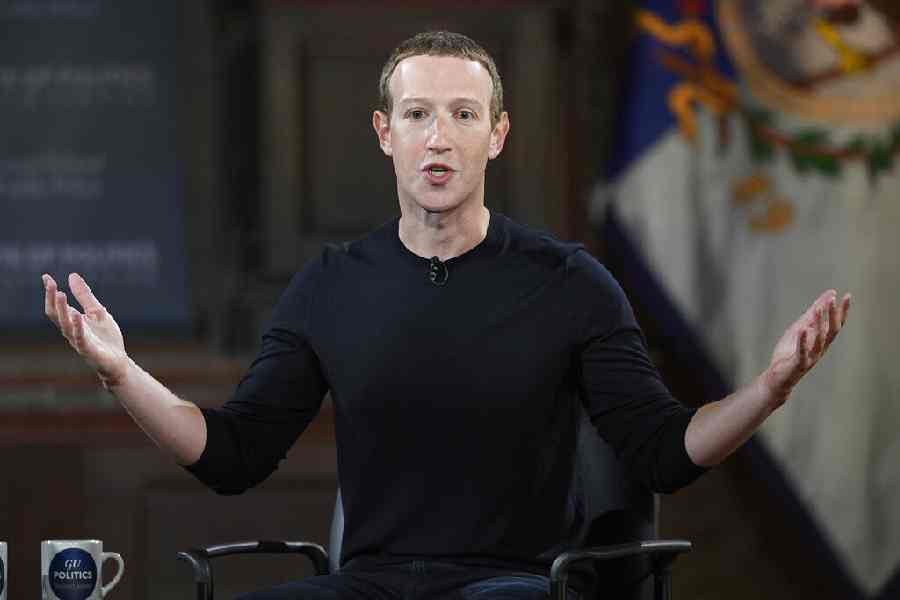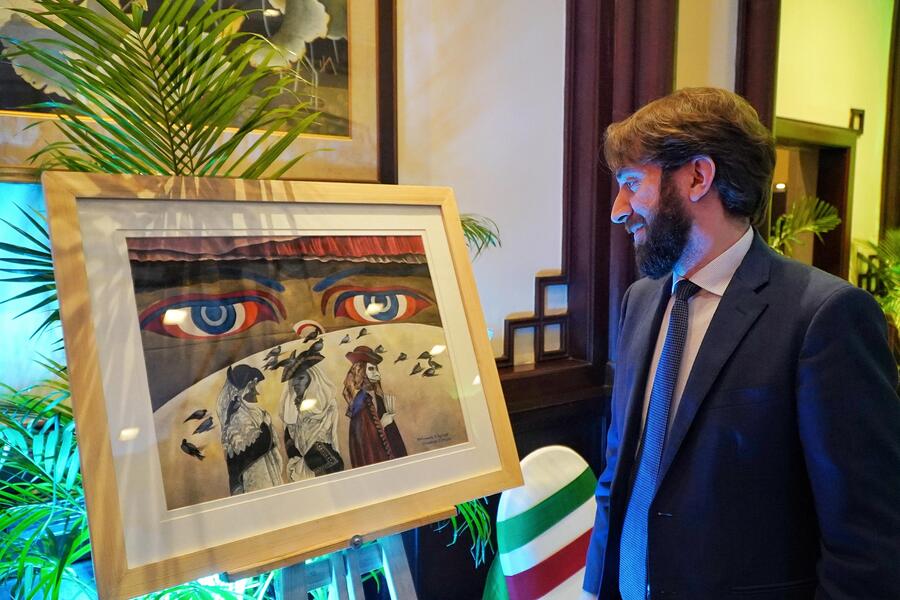 Thursday, 09 January 2025
Thursday, 09 January 2025
 Thursday, 09 January 2025
Thursday, 09 January 2025
At least two prominent Indian cartoonists were told that their drawings violate India’s information-technology laws last week – when Pulitzer-winning cartoonist Ann Telnaes’s decision to quit The Washington Post over her drawing of billionaires like Jeff Bezos and Mark Zuckerberg genuflecting to Donald Trump being rejected hit headlines across the globe.
Both the Indian cartoonists, Satish Acharya and Manjul, were informed by the Elon Musk-owned social media platform X that the objection to their drawings had come from police in Mumbai.
Like any good cartoon, the development is teeming with ironies.
Mumbai is a city that is associated with the late Bal Thackeray, the cartoonist-turned-political leader who made the Shiv Sena the force it is. And it was the Bombay high court that had slammed the Maharashtra government when cartoonist Aseem Trivedi was slapped with sedition charges for his drawings, among which was one that depicted India’s national emblem, the pillar of Ashoka, with wolves instead of lions. Eventually, all charges against Trivedi were dropped and the government admitted they were “knee-jerk” reactions.
Acharya posted about the notices he got with the wit that comes naturally to those who can tell entire stories with a few pen strokes.
“So happy to know that Mumbai is so peaceful with perfect law & order situation that the police are now focussing on cartoons,” he wrote on his X account, adding an emoji. He posted screenshots of messages he had received from the social media platform.
“In the interest of transparency we are writing to inform you that X has received a request from Mumbai Law Enforcement regarding your X account. @safishacharya that claims the following content violates India's Information Technology Act,” each notice said.
“We have not taken any action on the reported content at this time…. it is our policy to notify our users if we receive a legal request from an authorized entity (such as law enforcement or a government agency) to remove content from their account. We provide notice whether or not the user lives in the country where the request originated,” they said.
“We understand that receiving this type of notice can be an unsettling experience…. we want you to have an opportunity to evaluate the request and, if you wish, take appropriate action to protect your interests. This may include seeking legal counsel and challenging the request in court, contacting relevant civil society organizations, voluntarily deleting the content (if applicable) or finding some other resolution.”
Manjul, who does not use a surname, also got the same notices.
Neither Acharya nor Manjul has received any formal police complaint. Neither followed up with X to know how their work had violated laws. Both told The Telegraph Online they were not afraid.
“India's Constitution gives me the right to express my opinion on current affairs through cartoons,” Satish Acharya said.“People in power may or may not agree with the cartoons, but they can't snatch the right of cartoonists to question/criticise/express opinion through cartoons.”
Manjul, too, said he was not cowed down.
“However, the notification itself raises concerns about transparency and process,” Manjul said. “This is the second time for me — the first was a vague and opaque notice a couple of years ago. This time, they’ve at least named the Mumbai police. But I still fail to see how the cartoon violates any law.”
The notifications, Manjul said, “have a chilling effect on free speech and journalism” which fosters “an environment of self-censorship.”
“Many creators and journalists shy away from sensitive topics, fearing repercussions,” Manjul said. “When I went public with a similar notice earlier, I lost clients — organisations are afraid to associate with those seen as critical of the establishment.”
Acharya agreed. He says he has come to realise that “it's become quite normal for journalists/cartoonists” to face objections.
“India had a rich legacy of cartoonists expressing their unfiltered thoughts through editorial cartoons,” he lamented.
Manjul wrote on Patreon that it was becoming difficult for him to post most of his work for public consumption “without fear of backlash, harassment, or worse”.
“I contacted X for clarification but haven’t received any response yet. While I appreciate that the cartoon wasn’t taken down, the increasing governmental pressure to censor free expression on these platforms is concerning,” Manjul said.
In the 2007 Manchester University research paper titled 'Reconsidering the Decline of the Editorial Cartoon', political scientist Ilan Danjoux wrote that the first political cartoon emerged in Egypt around 1,360 BC when an unknown artist “lampooned Ikhnaton, the father-in-law of Tutankhamen”.
The relevance of the editorial cartoon, Danjoux wrote, can be measured against “the efforts taken to silence them”.
Both Manjul and Acharya pull no punches in speaking truth to power in an India that is slipping on the world press freedom index.
“The normalisation of suppressing dissenting voices is alarming. A free press is fundamental to democracy,” said Manjul. “Silencing criticism, whether through notices or censorship, reflects a regressive approach and is far from the vision of a developed nation we aspire to be.”
Satish Acharya agreed: “The editorial cartoonist's job/duty is to question the govt/establishment/policies/leaders. As a professional cartoonist, I've been doing the same job for the last two decades.
“The party in power, people in power don't make any difference,” he added. “They might change. But the cartoonist's stance of questioning the government doesn't change.”
Both Manjul and Acharya doffed their hats to Ann Telnaes for her defiance.
“What she did — criticising the owner of her own newspaper through her work — is an act of courage that seems unimaginable in India,” said Manjul.







